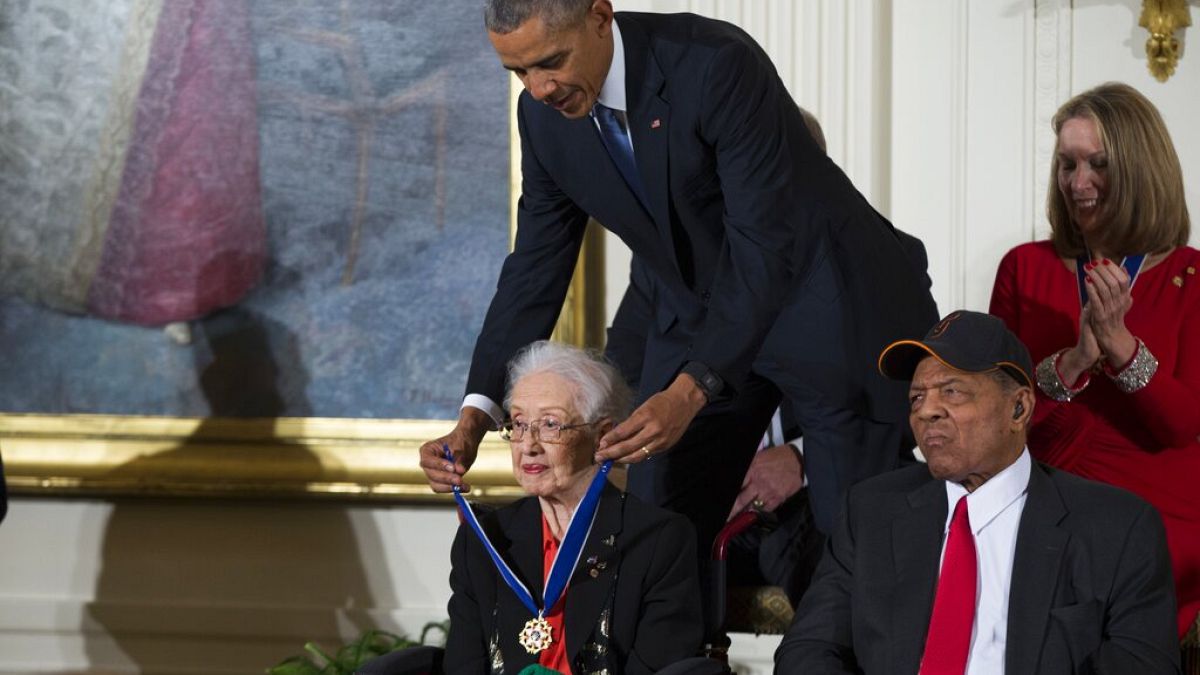Katherine Johnson was eventually portrayed in the 2016 hit film “Hidden Figures,” about pioneering black female aerospace workers.
Katherine Johnson, a mathematician who calculated rocket trajectories and earth orbits for NASA’s early space missions and was later portrayed in the 2016 hit film “Hidden Figures,” about pioneering black female aerospace workers, has died. She was 101.
Johnson was one of the “computers” who solved equations by hand during NASA’s early years and those of its precursor organization, the National Advisory Committee for Aeronautics.
She and other black women initially worked in a racially segregated computing unit in Hampton, Virginia, that wasn’t officially dissolved until NACA became NASA in 1958. Signs had dictated which bathrooms the women could use.
NASA Administrator Jim Bridenstine tweeted that the NASA family “will never forget Katherine Johnson's courage and the milestones we could not have reached without her. Her story and her grace continue to inspire the world.”
America's first human space program
Johnson focused on aircraft and other research at first. But her work at NASA’s Langley Research Center eventually shifted to Project Mercury, the nation’s first human space program.
“Our office computed all the (rocket) trajectories,” Johnson told The Virginian-Pilot newspaper in 2012. “You tell me when and where you want it to come down, and I will tell you where and when and how to launch it.”
In 1961, Johnson did trajectory analysis for Alan Shepard’s Freedom 7 Mission, the first to carry an American into space. The next year, she manually verified the calculations of a nascent NASA computer, an IBM 7090, which plotted John Glenn’s orbits around the planet.
“Get the girl to check the numbers,” a computer-skeptical Glenn had insisted in the days before the launch.
“Katherine organized herself immediately at her desk, growing phone-book-thick stacks of data sheets a number at a time, blocking out everything except the labyrinth of trajectory equations,” Margot Lee Shetterly wrote in her 2016 book “Hidden Figures,” on which the film is based.
“It took a day and a half of watching the tiny digits pile up: eye-numbing, disorienting work,” Shetterly wrote.
'Exceptional in every way'
Shetterly told The Associated Press on Monday that Johnson was “exceptional in every way.”
“The wonderful gift that Katherine Johnson gave us is that her story shined a light on the stories of so many other people,” Shetterly said. “She gave us a new way to look at black history, women’s history and American history.”
Shetterly noted that Johnson died during Black History Month and a few days after the anniversary of Glenn’s orbits of the earth on Feb. 20, 1962, for which she played an important role.
“We get to mourn her and also commemorate the work that she did that she’s most known for at the same time,” Shetterly said.
Johnson considered her work on the Apollo moon missions to be her greatest contribution to space exploration. Her calculations helped the lunar lander rendezvous with the orbiting command service module. She also worked on the Space Shuttle program before retiring in 1986.
In 2015, President Barack Obama awarded Johnson — then 97 — the Presidential Medal of Freedom, the nation’s highest civilian honor.
